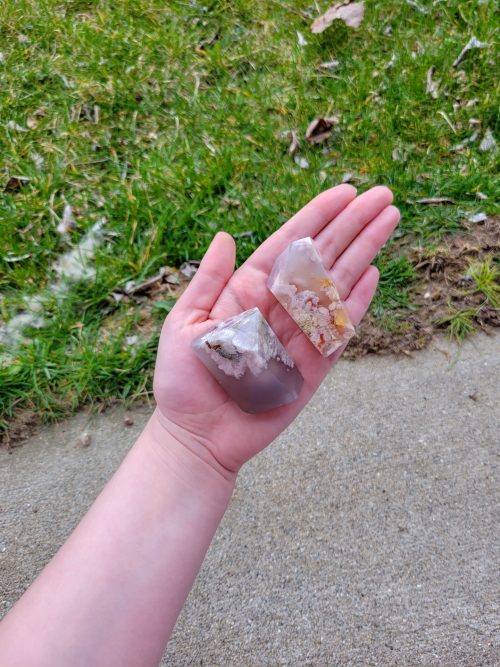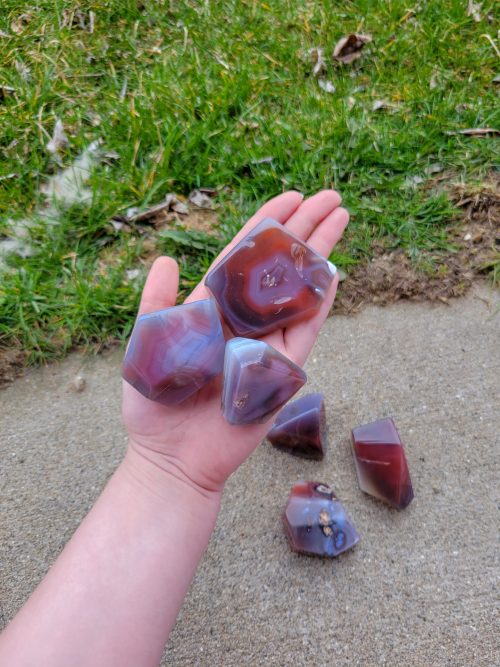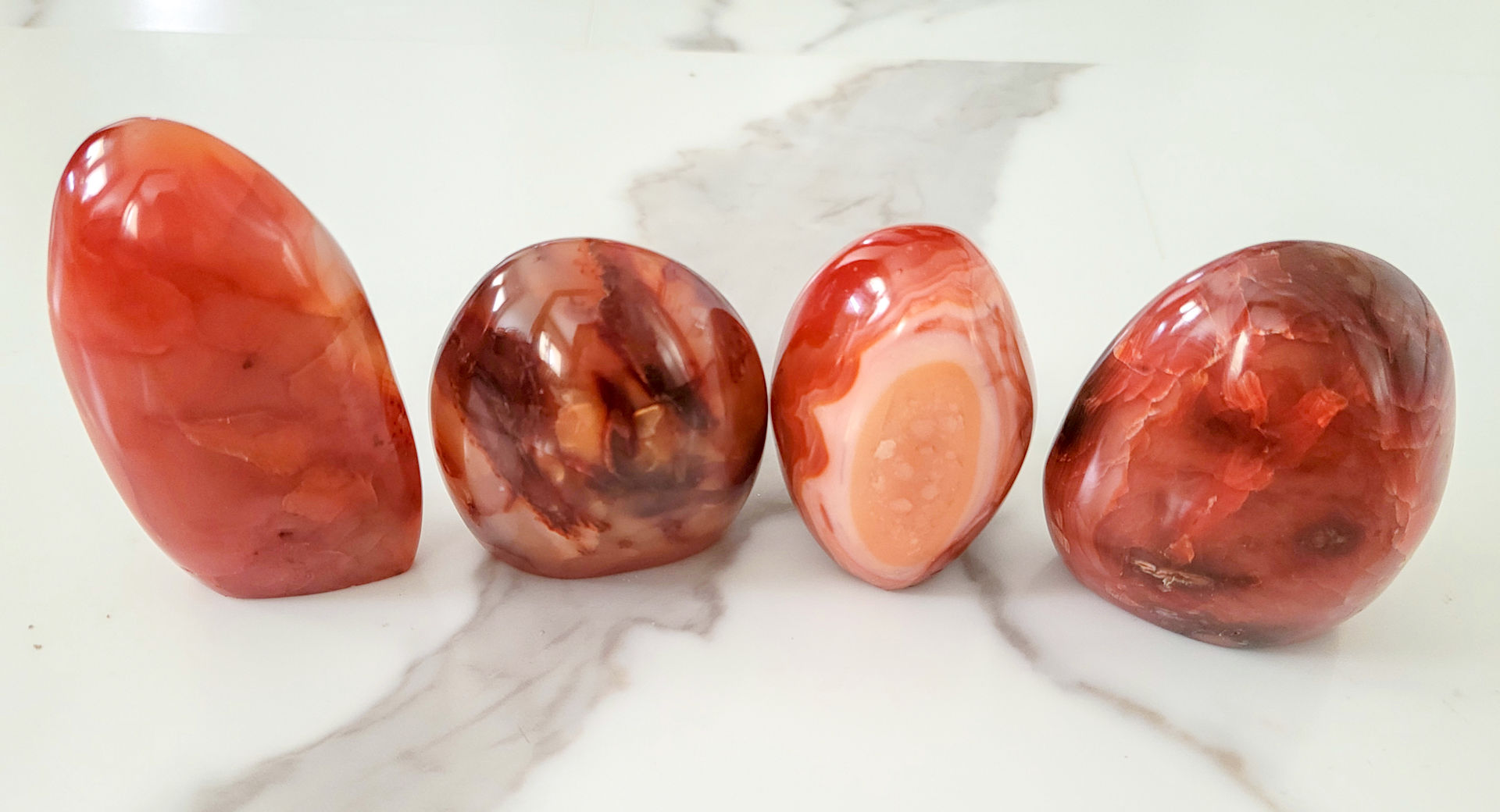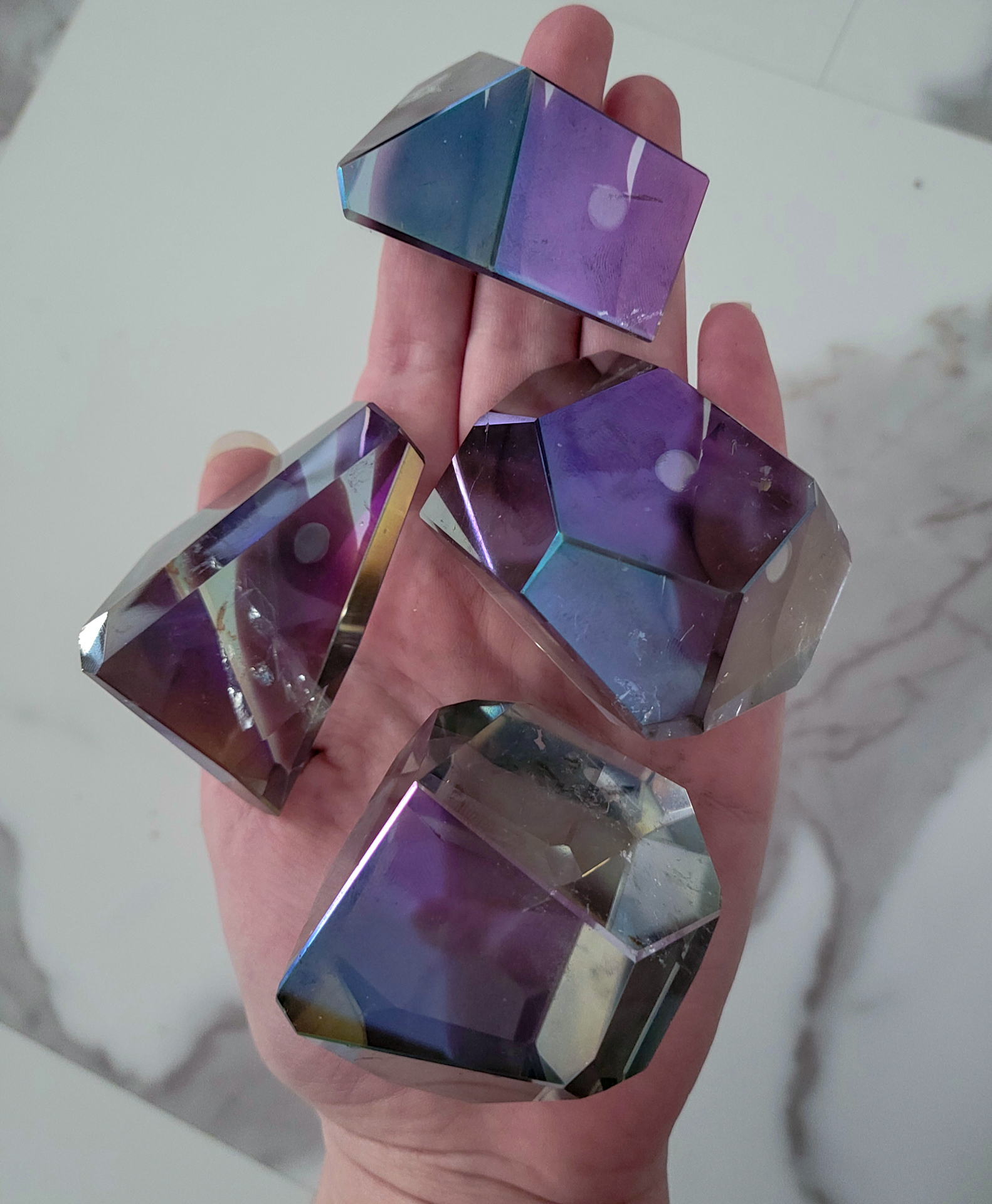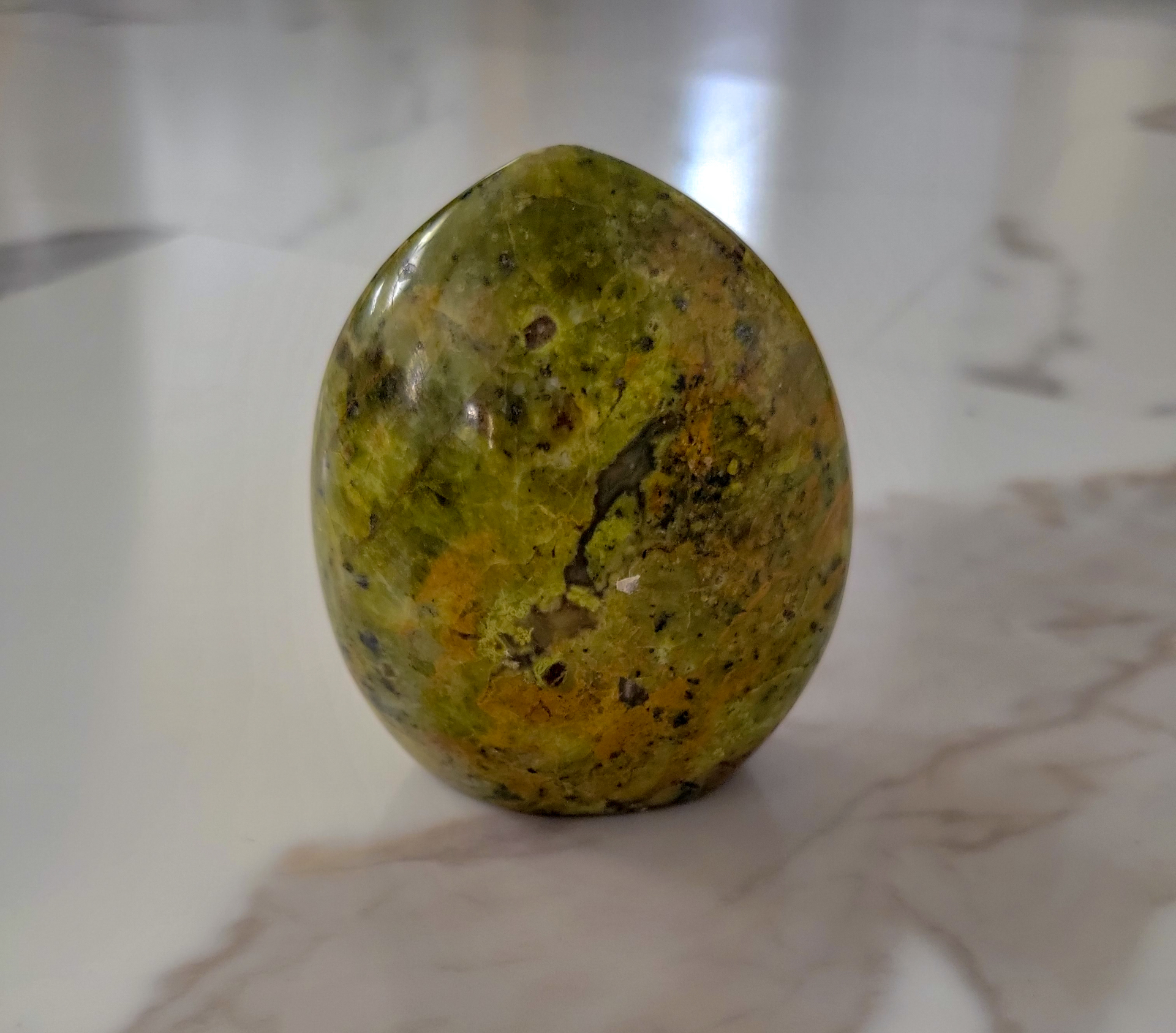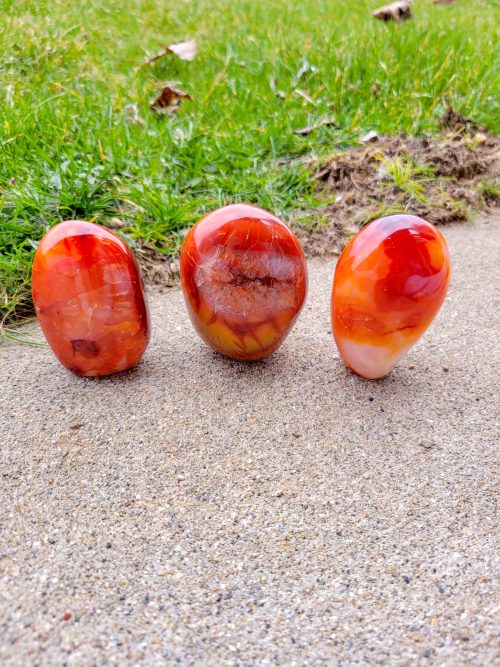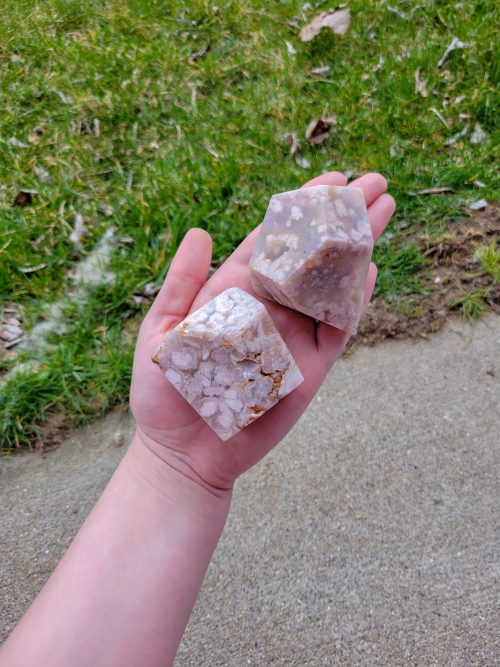-
5cm Wide Flower agate gets its name from the flower-like formations within the crystal's body. These crystals are volcanic rocks that are mainly composed of chalcedony and quartz. These crystals can vary in color; from pink to a dark grey/purple. Recently discovered in Madagascar, these crystals are believed to go back to 2000 BC. ***Due to natural variations in stones, the appearance will vary***
-
4.5cm x 4cm x 2.5cm Agate is a translucent form of microcrystalline quartz. These crystals form inside of igneous rocks over a long period of time and get their banding from years of siliceous groundwater building up in the cavities of these rocks. What makes this mineral so beautiful and unique is that the color variations and banding patterns are completely dependent on the environmental factors around them. This makes it so that every formation is different and there are no two formations that are the same! ***Due to natural variations in stones, the appearance will vary***
-
7 x 3 x 10cm Carnelian is a part of the Chalcedony family. It is formed when two silica minerals with different crystal structures grow together such as quartz and moganite. The firey orange and red colors come from iron oxides in the mineral. Carnelian can be found in Brazil, India, and Uruguay. ***Due to natural variations in stones, the appearance will vary***
-
6 x 5 x 6cm Clear quartz is made of Silicon dioxide and is one of Earth's hardest minerals on the Moh's hardness scale. It is found mixed in many types of minerals and also in bedrock, sand, and gravel. Quartz is naturally clear and opaque but can be found in many other colors. This mineral Earth's most abundant crystal and can be found in many different places but mostly in the Alps, Madagascar, and Brazil. ***Due to natural variations in stones, the appearance will vary***
-
5 x 4 x 5cm Clear quartz is made of Silicon dioxide and is one of Earth's hardest minerals on the Moh's hardness scale. It is found mixed in many types of minerals and also in bedrock, sand, and gravel. Quartz is naturally clear and opaque but can be found in many other colors. This mineral Earth's most abundant crystal and can be found in many different places but mostly in the Alps, Madagascar, and Brazil. ***Due to natural variations in stones, the appearance will vary***
-
5.5cm x 4cm x 4.5cm Agate is a translucent form of microcrystalline quartz. These crystals form inside of igneous rocks over a long period of time and get their banding from years of siliceous groundwater building up in the cavities of these rocks. What makes this mineral so beautiful and unique is that the color variations and banding patterns are completely dependent on the environmental factors around them. This makes it so that every formation is different and there are no two formations that are the same! ***Due to natural variations in stones, the appearance will vary***
-
6cm x 3.5cm x 2.5cm Agate is a translucent form of microcrystalline quartz. These crystals form inside of igneous rocks over a long period of time and get their banding from years of siliceous groundwater building up in the cavities of these rocks. What makes this mineral so beautiful and unique is that the color variations and banding patterns are completely dependent on the environmental factors around them. This makes it so that every formation is different and there are no two formations that are the same! ***Due to natural variations in stones, the appearance will vary***
-
8 x 3 x 8cm Green Opal is a type of common opal that ranges in color from a pale to dark green. It's one of the easiest Opals to find and can be found in 6 continents. Most of these specimens have come from Australia, Brazil, USA, Mexico, and Peru. ***Due to natural variations in stones, the appearance will vary***
-
5.5cm x 4.5cm x 2cm Agate is a translucent form of microcrystalline quartz. These crystals form inside of igneous rocks over a long period of time and get their banding from years of siliceous groundwater building up in the cavities of these rocks. What makes this mineral so beautiful and unique is that the color variations and banding patterns are completely dependent on the environmental factors around them. This makes it so that every formation is different and there are no two formations that are the same! ***Due to natural variations in stones, the appearance will vary***
-
5cm x 4cm x 7.5cm Carnelian is a part of the Chalcedony family. It is formed when two silica minerals with different crystal structures grow together such as quartz and moganite. The firey orange and red colors come from iron oxides in the mineral. Carnelian can be found in Brazil, India, and Uruguay. ***Due to natural variations in stones, the appearance will vary***
-
6cm Wide Flower agate gets its name from the flower-like formations within the crystal's body. These crystals are volcanic rocks that are mainly composed of chalcedony and quartz. These crystals can vary in color; from pink to a dark grey/purple. Recently discovered in Madagascar, these crystals are believed to go back to 2000 BC. ***Due to natural variations in stones, the appearance will vary***
-
6cm x 6.5cm x 1.5cm Agate is a translucent form of microcrystalline quartz. These crystals form inside of igneous rocks over a long period of time and get their banding from years of siliceous groundwater building up in the cavities of these rocks. What makes this mineral so beautiful and unique is that the color variations and banding patterns are completely dependent on the environmental factors around them. This makes it so that every formation is different and there are no two formations that are the same! ***Due to natural variations in stones, the appearance will vary***

